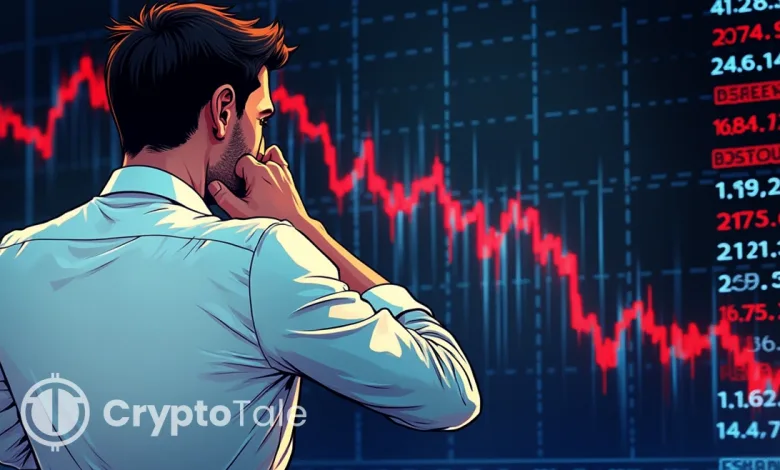Bitcoin Sinks Below $77K as Asia Markets Dive on Tariffs

- Bitcoin fell by over $6K in hours as traders exited fast on global trade tension fears.
- The crypto market showed panic with volume rising over 250 percent in a single day.
- Asian stocks dropped hard while US futures pointed to another round of sharp losses.
Bitcoin suffered a sharp and accelerated sell-off as Asian markets opened on April 7, 2025, crashing to $76,947.32 and losing 7.67% within a single day. Triggered by President Donald Trump’s tariffs and Beijing’s retaliation, the steep decline of the Asian market increased concerns over global trade tensions.
The cryptocurrency, trading above $83,000 hours earlier, broke through multiple support levels, signaling the market’s fear-driven retreat from risk. Bitcoin’s drop from its peak of $109,225 in January has led to a considerable restructuring of the global digital asset market, which appears to be inextricably connected to the worsening macroeconomic landscape.
Bitcoin’s Market Metrics Reflect Deepening Fear
With the price collapse, there was an adverse effect on the market cap of Bitcoin, which now stands at $1.52 trillion and had an approximate single-day decline of over $126 billion. The trading activity has also been at the forefront, as the volume has surged almost 259.55 percent in the past 24 hours to $49.73 billion, showing heavy selling pressure from retail and institutional accounts. The volume-to-market-cap ratio has risen to 3.24%, suggesting market participants respond decisively to macroeconomic uncertainty rather than isolated crypto-sector issues.
At this moment, a scant circulation of 19.84 million BTC just about approaches the asset’s maximum supply cap of 21 million, signifying that the crash was on demand and not a decrease in token availability or technical disruptions on the BTC network.
Source: CoinMarketCap
The chart from CoinMarketCap confirms a momentum of downward trajectory from 6:00 PM UTC, with evident rebounds not observed throughout the night or early morning hours. By 7:00 AM UTC, price levels fell below $77,000, following which the market did not exhibit any signs of stabilization or reversal. The pattern mirrors previous crypto market crashes, where external macroeconomic shocks triggered panic liquidations across major digital assets.
Related: Pirro Dismisses Market Crash as ‘Necessary Correction’ Defending Trump’s Tariffs
Global Equities Spiral as Tariff Tensions Ripple Worldwide
Just as the crypto sector plunged dramatically, so did the financial markets. The Dow Jones Industrial Average futures fell 2.1%, while S&P 500 and Nasdaq futures declined 2.5% and 3.1%, respectively.
These moves followed severe losses at the end of last week, where the Dow plunged 5.5%, the S&P 500 dropped 6%, and the Nasdaq Composite slid by 5.8%. These were the worst declines since the COVID-19 financial shock, underscoring the magnitude of investor concern over trade developments.
In Asia, the impact was immediate and severe. Tokyo’s Nikkei 225 index opened the week with an 8% drop and is still down 7.2% by noon, standing at 31,337.76. The Tokyo Stock Price Index (Topix) futures experienced a temporary halt triggered by a circuit breaker following a steep decline in U.S. futures earlier in the session. The widespread market retreat was fueled by the sudden and aggressive implementation of sweeping U.S. tariffs. President Trump confirmed these moves late on Sunday aboard Air Force One, stating he was not concerned about the sell-offs, remarking, “Sometimes you have to take medicine to fix something.”
On Friday, Federal Reserve Chair Jerome Powell addressed the market implications of the newly introduced tariffs. He stated that the tariffs exceeded expectations and acknowledged the rising risk of both inflation and a slowdown in economic output. Powell emphasized that the Federal Reserve would monitor the situation closely before making any decisions regarding interest rate adjustments.





